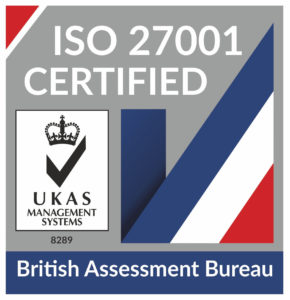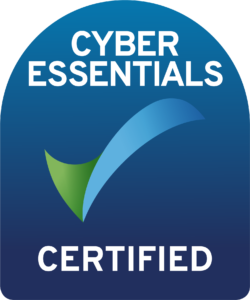
HaloITSM Guides
Documentation to assist with the setup and configuration of the HaloITSM platform
Guides > Agreements (Contracts)
Agreements (Contracts)
| Field | Type | Description |
| Contract charge description | Free Text | When any billing is processed for Agreement-related charges, this will be the line that appears on invoices, along with the Agreement name. $ Variables can be used. Variables Guide |
| Enable agreement cost calculation using calculation field | Checkbox | *Not Working Currently* When selected, a cost calculation input box will appear below this setting, in here you can enter a calculation based on custom field values(numerical fields), you can use custom fields of the following entities: agreement, site and customer. |
| Allow unused Agreement time to be rolled over to the next period | Checkbox | When checked, time in a Fixed Agreement's pot of hours will roll over to the next billing period, should any remain at the end of the current period. rolling over of time will mean any billable action you will initially use time from the last period, if this isn't enough i.e. the remaining time is used up half way through an action, then the system will create a second action for agreement time from the current period. |
| Percentage of the next period's agreement time that can be used in the current period | Float | This setting will do the same as the roll over setting, but instead of the current period, it will use the next period. For Fixed Agreements, the value entered here will determine the portion of the next billing period's pot of hours that can be used in the prior period. These will be removed from the pot's total, upon starting the next period. For example, if 50% is used, and there are 5 hours per period and no hours used so far in the previous, current or next period, 5 hours of Agreement time go to the previous and current periods and 2:30 go to the next period as 50% is selected. This leaves 2:30 remaining which is left as billed time on the first action. As a consequence of needing to bill previous and future periods there is an Agreement billing date override present on the action: Adjusting this will change the period the action is checked for specifically for Agreement calculations so you could move actions back to previous periods if completed late. |
| Calculate Agreement value using Assets | Checkbox | When checked, the Agreement value will be based on the number of assets and the price present on the Assets tab of an Agreement. Asset value on a Agreement can be negative. NB: this option is seperate from automated invoice quantities, check out this guide: Automating Quantities in Recurring Invoices. It is uncommon to calculate agreement value using assets, and other methods such as automating quantities are more recommended. |
| Show Assets as line items in invoice | Checkbox | When checked, Assets linked to Agreements will appear as line items on the Recurring Invoice associated to them. |
| Show Assets value on each line item | Checkbox | When checked, the Assets' corresponding values will be listed on each line. NB: "Show Assets as line items in invoice" must be checked for this setting to show in the list. |
| Asset Billing Description | Free Text | When Assets are added to Agreements & returned on associated recurring invoices, whatever is written here will be displayed as the invoice line description. $_variables can be entered here, to get the list of variables go to https://{yourhalodomain}/variables or /variables?type=154 (This is the specific type for recurring invoice $ variables). Guide: Variable Types |
| Use Agreement Rules | Checkbox | When enabled agreement rules can be configured, allowing you to have users be automatically assigned to agreements upon import based on criteria in these rules. Contract/Agreement Rules |
| Agreement Rules Match Type | Single Select | Determines how users are matched to agreement rules. 'Use the first matched rule in the list. Apply the user to an agreement that matches the outcome if possible' - Only the first rule in the sequence will be checked, if a user meets the criteria for this rule the outcome will be applied, if the user does not meet the criteria for this rule no outcomes will be applied. 'Match all possible rules. Apply the user the first agreement that matches the outcome if possible' - All rules in the list will be checked in order of sequence until the user matches criteria. If a user matches criteria of a rule the outcome of this rule will be applied and rules will stop being checked. If the user does not match any criteria of the rules in the list no outcomes will be applied. |
| Rule Outcomes | Button | Takes you to the Agreement rules setup page, here you can create/edit new rules. |
| Next Agreement Reference | Free Text | This will initially act as the first Agreement Reference, and will increment by 1 every time a new reference is generated. Should there be less than three numbers in this reference, additional digits will be added i.e. 003, 026. |
| Enable Agreement Expiry Alarms (Deprecated) | Deprecated | This field has no current use, as its functionality has been replaced by Automated Tickets, which can be created in the Tickets > Automated Tickets section of the configuration. Guides: |
| Periodic History will only be shown for periods after this date | Date | Lines in an Agreements Periodic History tab will not show if they are from before the date set in here. |
| Email template to use for User Agreement notification | Single Select | This will be the Email Template used to notify End-Users regarding their Agreement(s). To see a list of email templates, navigate to Configuration > Emails > Email Templates. You can use custom made email templates for this user notification. |
| Default Labour Period for new Agreements | Single Select | The labour period for a fixed agreement represents the duration of time after which the hours included in the Agreement are reset, this option allows you to specify a default labour period for new agreements. |
| Default end date type for new Agreements | Single Select | When generating new Agreements for customers, this selection will be used as the default value populated for the "End Date Type" field. This can still be changed at the point of creation, but not after. |
| Default periods ahead for the start date of new Agreement recurring invoices | Integer | Fixed agreements have a start date and a labour period, the recurring billing associated to this agreement is configured via the creation of an associated recurring invoice. This option will default the start date of the recurring invoice, based on the start date and labour period of the fixed agreement i.e. if this is set to 1, and a fixed agreement is created for the 1st of March and labour period of monthly, then the start date on the subsequent recurring invoice will be the 1st of April. Guide on Creating Agreements |
| Create a new Recurring Invoice after creating a Agreement | Checkbox | When selected, upon clicking 'Save' after creating a new Agreement, you will be automatically redirected to the new recurring invoice screen (with recurring invoice already associated to the newly created Agreement). Recurring Invoice general settings can be found within Configuration > Billing > Recurring Invoices. |
| Auto select the Agreement on a Ticket based on billing description | Checkbox | If enabled, an agreement with an agreement type which is set to be the default via the checkbox on Agreement types "The Agreement with this description will be the default for the Customer" will be added to new Tickets automatically (Configuration > Billing > Agreement types). Make sure the Agreement types are different if you are using multiple Agreements per customer. The billing description is set per Agreement. NB: This only applies when the 'Agreement' field is added to respective Ticket types. |
| Include only active Agreements and the most recent renewed Agreement when selecting a Agreement | Checkbox | If the Agreement field is set on a ticket, then the list to choose from on the drop down will only include Agreements that are active or recently renewed. |
| Show the Billing Rule Breakdown on Tickets | Checkbox | When checked, the details of the related Billing Rules for that Customer will be made visible on Tickets, this can be found via the briefcase symbol that appears beside the ellipse in the top right hand side of the ticket screen. The details shown within the briefcase symbol is the Agreements and the billing rules lines that are set against the agreement. |
Show Contract balance on the End-user details tab in the Ticket details screen | Checkbox | When selected, Agreement balance (remaining hours left for the period) will be displayed on the $_request details screen - under the End-User Details section |
| Only show Agreement balance where the User is recorded against the Agreement | Checkbox | When checked, the above setting will only work when the User is actually marked as associated with the Agreement itself. This can be acheived via the users tab of agreements, you can add users and give an associated value to them, the use case of this funcionality is for calculating the value of the agreement based off of the user value. |
| Hide Site Field on Agreement Details | Checkbox | When selected, the site of the user will not show in the Agreement details, this is located in the settings dropdown of the details tab within an agreement. |
| When an Agreement is changed on a Ticket update all time entries to use that Agreement | Checkbox | *Recommended Setting* Should the Agreement on a Ticket be changed, if this setting is enabled, the Billing for that ticket will be automatically recalculated, this prevents actions from being stuck in the old agreement consumption, when the agreement on the ticket is changed. |
| Agreement Statuses | Button | This will open the menu for creating and modifying Agreement Statuses. The only functions these have are for categorisation and marking as active/inactive. |
| Agreement Type | Button | This will open the menu for creating and modifying Agreement Types. These are used to set certain prefixes and allocate Customer defaults. |
| Agreement Subtype | Button | This will open the menu for creating and modifying Agreement Subtypes. These are purely used for categorisation. |
| Agreement Default Column Profile | Single Select | The selected Column Profile will be used as a default for anyone viewing the Agreements page. This is overriden by any Agent-specific preferences. |
| Configure Column Profiles | Button | This will open the menu for creating and modifying Column Profiles that are used with Agreements. These offer ranges of agreement information to be displayed on the table view, and these columns can be ordered and sorted as you please. |
| Copy Agreement from Ticket/Project to Children/Tasks on creation | Checkbox | When creating Child tickets or Tasks from Parents or Projects, the Agreement associated with the original entity will be inherited. |
| When creating Agreements from Sales Order Lines automatically link to the Project associated with that line | Checkbox | If you are creating Agreements from a Sales Order, should the line you are creating it from have a Project associated to it, that Project will then be linked to the newly created Agreement. |
| Enable secure Agreement signing | Checkbox | When this option is enabled, only the Agreement Contact can sign the Agreement. Guide: Signing Contracts/Agreements |
| Default PDF Template for Agreements | Single Select | The PDF template selected here will be used as a default selection for when you generate an agreement PDF. This can still be changed at the point of creation. You can also set a default template from the details tab of each agreement. |
| Edit Agreement PDF Templates | Button | This will open the menu for creating and modifying Agreement PDF Templates. These are used to present your Agreements and their associated details in any format you see fit, and use custom HTML to do so. |
| Import Customer Agreements | Button | This will open the menu for importing Customer Agreements via XLS / CSV uploads. The import files will need to be formatted appropriately, the column names on the import sheet must be kept the same, as this is how the system matches on the field names within Halo, refer to this guide for more information on imports: Importing Data. To download the sample spreadsheets, click the import button and then on the top left beside the 'Choose File' button, you can download the sample spreadsheets. |
| Import Supplier Agreements | Button | This will open the menu for importing Supplier Agreements via XLS / CSV uploads. The import files will need to be formatted appropriately, the column names on the import sheet must be kept the same, as this is how the system matches on the field names within Halo, refer to this guide for more information on imports: Importing Data. To download the sample spreadsheets, click the import button and then on the top left beside the 'Choose File' button, you can download the sample spreadsheets. |
Popular Guides
- Asset Import - CSV/XLS/Spreadsheet Method
- Call Management in Halo
- Creating a New Application for API Connections
- Creating Agents and Editing Agent Details
- Departments and Teams
- Halo Integrator
- Importing Data
- Multiple New Portals with different branding for one customer [Hosted]
- NHServer Deprecation User Guide
- Organisation Basics
- Organising Teams of Agents
- Step-by-Step Configuration Walk Through
- Suppliers



